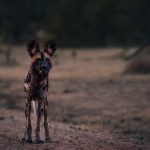The Most Memorable Nkwazi Covers
Our Top Picks
Over the past ten years, Nkwazi covers have delighted, inspired and intrigued readers and captured people’s imagination. They’ve proudly shown the best of Zambia’s natural beauty, wildlife and culture. And in the process, showcasing the best of our local photographers. Nkwazi is a proudly Zambian magazine, and so many of our covers highlight the best of what Zambia has to offer, particularly to travelers. If there’s one thing that Nkwazi has done brilliantly over the years, it’s visually representing the beauty of Zambia’s natural environment, people, history, and culture.
Oftentimes, we know well in advance which covers the image we want to be the face of an edition. Other times, the perfect cover reveals itself near the end of the production process.
It would be best if you didn’t judge a book (or, by extension, a magazine) by its cover, so the cliché goes. However, I’m comfortable with the idea of our readers making their initial judgments about the magazine based on their covers. The best covers still command your attention and compel you to look inside years and years later. The magazine’s design, look and feel have evolved over the years, but the commitment to quality, eye-catching cover images remains.
With the advent of our 60th edition, Nkwazi has turned 10, and we wanted to celebrate this by taking you on a journey through our archives to visit our favorite covers from the past decade.
Issue 2 – Kuomboka Ceremony

The Litunga’s boat leads the way in the voyage from Lealui to Limulunga, as his subjects follow close behind. The second edition of Nkwazi was my introduction to the magazine. I first saw it while on holiday in Livingstone, staying at a hotel that placed copies of it in all its guest rooms. I still have that first copy of Nkwazi. I was impressed by the quality of the cover alone. I was drawn in by the pageantry of the Kuomboka captured by photographer Francois D’Elbee. That one image from the Kuomboka captured the beauty, splendor, and unity displayed at this unforgettable event. The vivid green, the legion of rowers and passengers all united in the goal of resettling on higher ground.
Images such as these are valuable as a means of preserving our culture and our knowledge of it, and it is empowering to see them taking centre stage in a proudly Zambian and African publication.
Issue 14 – The Afronauts

Did you know that Zambia made a doomed attempt at joining the space race, and one dreamer proclaimed that Zambia would make it to the moon before the US and Russia? That dreamer was Edward Mukuka Nkoloso, and few people know his story. Before joining the space race, he fought with British forces in World War II and was a freedom fighter. Some might say he was a maverick ahead of his time. Many more people would say he was crazy. Either way, the story of Eddie Nkoloso and Zambia’s ill-fated race to space has largely been forgotten. This cover brings attention to the odd and fascinating story. The Afronaut on the cover, clad in chitenge and an almost comical glass helmet, is an unusual sight. Fitting as Nkoloso and the space programme are unique elements of Zambian history.
This cover is an example of how Nkwazi has highlighted some lesser-known Zambian stories, the image being part of a larger collection by photojournalist Cristina Middel.
Issue 25 – Kasanka Bat Migration

This image by Chosa Mweemba is beautiful, but when I think about it, it leaves me a little dumbfounded. Every year from November to December, millions of fruit bats migrate from DR Congo and descend upon the Kasanka National Park in Zambia for what is the world’s largest mammal migration. Having never witnessed the bat migration myself (though it is on my long list of experiences I am after), I can only imagine it is a glorious spectacle. To witness the world’s largest mammal migration in the miombo woodlands of Kasanka National Park with the backdrop of an arresting African sunset is something a privileged few get to experience. At the same time, it must also be intimidating to be surrounded by that many bats, especially with their creepy reputations. Nonetheless, the image speaks volumes for me and beckons intrepid travelers to visit.
Issue 29 – Discover Lochinvar

Talk about perfect timing. Captured by photographer Chosa Mweemba, a herd of Kafue lechwe gallops past a fisherman in Lochinvar National Park floodplains. The semi-aquatic Kafue lechwe is only found in the Kafue Flats (which includes Lochinvar and Blue Lagoon national parks). This is their domain.
This image brings to mind an important question, how can we co-exist with nature? How can we eke out a living from nature without depleting it? We often associate national parks with gorgeous landscapes and wildlife but rarely do we think of the people who live and work in and around them.
Issue 37 – Raw Malawi

We interviewed Malawian musician Hazel Mak, and apart from talking career, we got her recommendations for what to see and do in Malawi. One of her favorite places she mentioned was Cape Maclear, a town on the southern end of Lake Malawi. Hazel called it a slice of heaven and following my research on the town and the images that came up, I could see why. The small town is dominated by Lake Malawi, has excellent beaches, and is bounded by lush, forested hills.
Here a fisherman proudly shows off his catch at the picturesque Lake Malawi. This image (from KAYAK Africa) puts Africa’s abundant natural beauty and natural resources and the relationship its people have with her front and center.
Issue 40 – Kafue National Park

I’ve heard people say there’s nothing quite like an African sunset. It’s the type that makes you stop mid-journey to take in the views, just as our team did during this trip to Kafue National Park. Here, the warm, golden colors punctuate the landscape. This image, captured on the banks of the Kafue River by Kalichi Pictures, gives me a sense of calm. The sun reflecting on the water and coloring the skies, the rich vegetation, and the feeling that there’s no one else around for miles come together to create a postcard-perfect image. Kafue is not only the oldest national park in Zambia but also the largest. You may have read that it is roughly the same size as Belgium or Wales. The Kafue is a vast expanse of varied terrains and diverse wildlife. Despite having a lot to offer visitors, the park remains relatively untouched (this is sometimes a good thing).
Issue 42 – Blue Lagoon

At some point, I told myself I had to pick between this Blue Lagoon cover and the Lochinvar cover. Ultimately though, both images were too good to pass up. The lone fisherman in Blue Lagoon National Park, framed by towering grass on either side of him, has a look of utter concentration. His mission is to get his catch for the day, until the next time. His life is utterly different from mine and that of the average Nkwazi reader. Again, it makes me question how we can co-exist with nature and reminds me of the human stories of those who live in and around national parks.
Issue 45 – Fine Art

This self-portrait by Namukolo Siyumbwa (Eness Photography) is truly a work of art. It is not your average selfie. Much like the Afronauts cover, it represented a departure for Nkwazi, as we often feature a local travel destination on our covers. This creative image combines a self-portrait with a piece of home. The textured background was taken from the bark of a mango tree in Namukolo’s garden. This was one of those images I immediately knew I wanted for the cover as soon as I saw it.
Issue 53 – Dr Kenneth Kaunda

An ode to a great statesman. With the passing of Dr. Kenneth Kaunda, Zambia’s first president and a key figure in the country’s fight for independence, we immediately knew we wanted to honor him in our next edition, which also happened to coincide with our Independence Day. I had the privilege of interviewing two of KK’s children (Kaweche and Musatilanji) and meeting KK himself while working on a story two years prior.
It wasn’t a question of whether we would honor Dr. Kaunda again. It was a question of how and what image we would use to honor him. We wanted to avoid slapping on a well-known photograph of KK or re-use one of our older images from the 2019 photo shoot we had with KK and his family. The resounding choice was an illustration, something we had only done once before (issue 35, my first issue as editor).
Issue 56 – Architectural Forms of Man and Nature

This is one of the covers that generated the most debate amongst our team. It was taken in Cape Town’s colorful Bo-Kaap neighborhood by Victoria Kelly. Some team members found it too bright and thought it was too much of a departure from the norm. They were right, it was a departure from the norm, but I didn’t believe this should be a reason not to use the image for the cover.
The hillside Bo-Kaap area is one of Cape Town’s most distinct neighborhoods, and it has given us one of our most distinct covers. Are some readers taken aback by the bright pink home on display? Perhaps. However, they would also be able to appreciate the beauty of this vibrant neighborhood. And given a choice between this and a subtler option, the choice was clear. The bolder, more vibrant option was the one to use.



